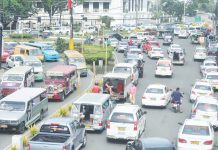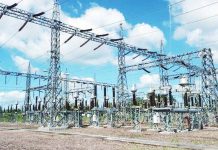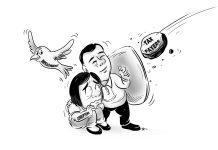
ILOILO PROVINCE’s recent economic report is a sobering reminder that no matter how fast the services and industry sectors grow, a weak agricultural base can drag everything down. The province’s economic growth of just 1.4 percent in 2024, its slowest in years, shows a structural fragility: when droughts scorch the land, livestock diseases spread unchecked, and fish stocks decline due to illegal fishing, the whole economy feels the pain.
Agriculture, forestry, and fishing (AFF) still make up nearly a fifth of Iloilo’s economy, yet the sector shrank by a staggering 15.9 percent last year. That collapse wiped out the gains of 15 other subsectors that had shown positive performance. Behind those numbers are stories of parched rice fields, farmers crushed by debt, and fisherfolk whose boats return home empty. Despite steady growth in services and industry, Iloilo cannot claim true progress if the people who till the soil and work the coasts remain trapped in vulnerability.
The provincial and municipal governments must treat this as an urgent call to action — not merely for recovery but for reinvention. Drought resilience must be built into every level of agricultural planning. This means expanding irrigation systems beyond traditional canals to include small water impounding projects, rainwater harvesting, and solar-powered pumps that can sustain crops even during long dry spells. Climate change is no longer a seasonal threat — it is the new normal.
Equally vital is the modernization of pest and livestock disease control. The recurring losses from rice pests and animal outbreaks such as African Swine Fever are not simply acts of fate; they are the result of underfunded and reactive responses. Iloilo’s agricultural offices must strengthen early warning systems and veterinary surveillance, ensuring rapid response capacity that protects both farmers’ incomes and the province’s food supply.
The Philippine Crop Insurance Corporation (PCIC) must also step up its outreach and streamline access for small farmers who often lack the paperwork or awareness to avail of coverage. Insurance should not be treated as an afterthought but as a key safety net for those who bear the brunt of nature’s extremes.
In the long run, Iloilo’s sustainable rural infrastructure — from farm-to-market roads to post-harvest facilities — must match the quality of the investments poured into its urban centers. If services and industry represent Iloilo’s future, agriculture remains its foundation. Without it, the province’s growth will stand on shaky ground, and the prosperity of its cities will rest on the suffering of its countryside.
Saving Iloilo’s agricultural backbone is not just an economic necessity — it is a moral and strategic imperative. The farmers and fisherfolk who feed the province deserve more than sympathy; they deserve systems that work, support that arrives on time, and a government that truly understands that resilience begins in the fields.







